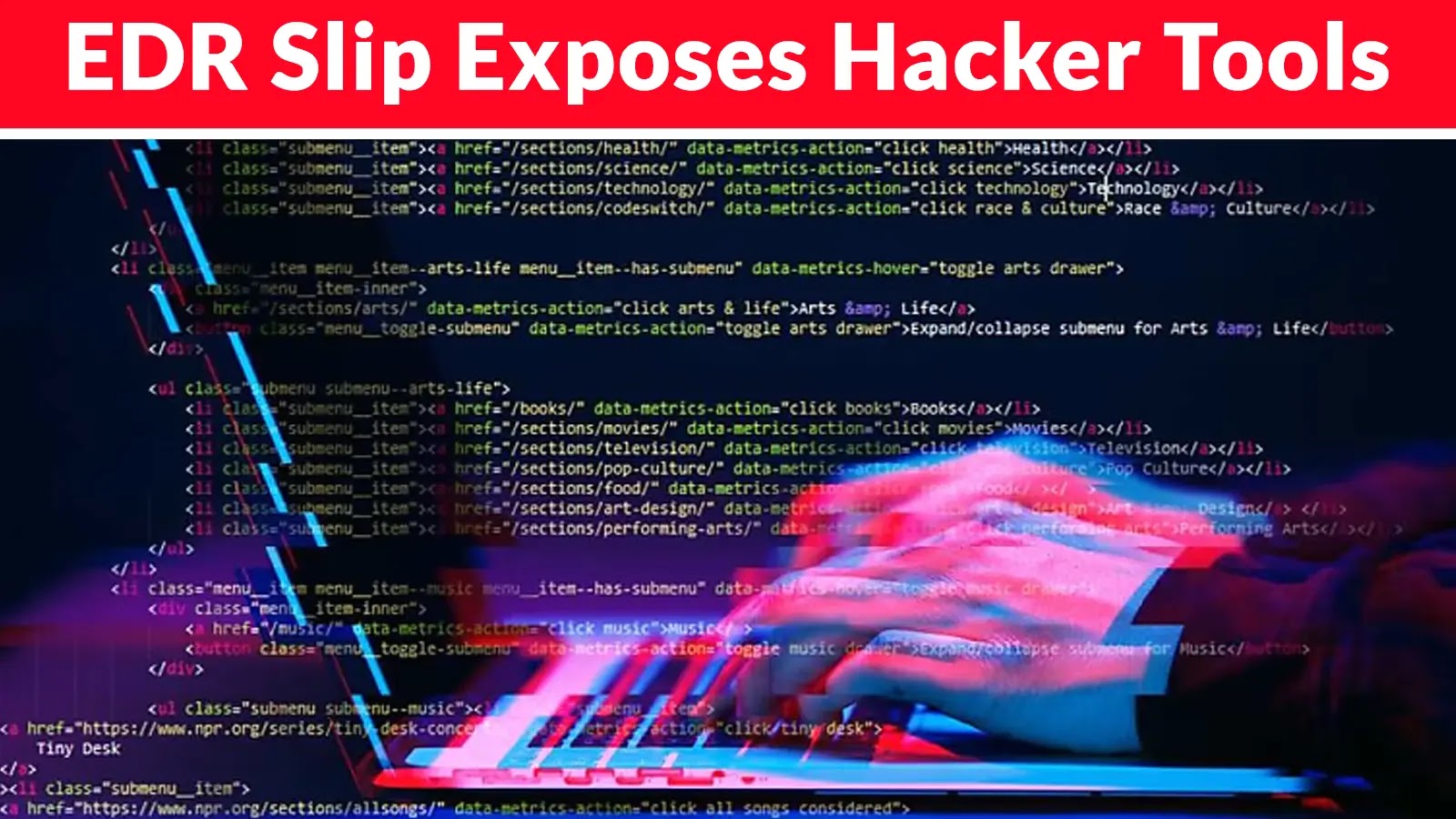
Threat Actor Installed EDR on Their Systems, Revealing Workflows and Tools Used
A Cyber Adversary’s Unforced Error: When EDR Becomes an Insider Threat
In a fascinating turn of events, a recent incident unveiled a significant operational blunder by a threat actor that inadvertently exposed their entire toolkit and methodologies. This was not the result of sophisticated counter-intelligence or a zero-day exploit, but rather a classic case of an adversary hoisted by their own petard: by installing an Endpoint Detection and Response (EDR) agent on their own command and control (C2) infrastructure. This oversight offered security researchers an unprecedented, real-time look into their operational workflows, tools, and tactical errors.
The Unintentional Exposure: EDR’s Unlikely Role
The scenario, as reported by Cybersecurity News, began when a threat actor was seemingly evaluating various security platforms. In a bewildering decision, they deployed a prominent EDR agent onto a system actively involved in their malicious operations. This action, likely intended for internal testing or evasion analysis, instead triggered a cascade of alerts that piqued the interest of Huntress analysts. The EDR, designed to monitor and report suspicious activities, faithfully recorded the threat actor’s every move, transforming an adversary’s operational environment into a meticulously logged goldmine for defenders.
Telemetry Tells All: Peeling Back the Layers of Adversary Operations
The EDR telemetry provided an unparalleled level of insight into the attacker’s habits and infrastructure. Initial observations of system activity, process execution, and network connections that would typically be suppressed or obfuscated by sophisticated adversaries were instead openly documented. This allowed analysts to meticulously reconstruct the attacker’s operations, identifying:
- Tools Used: The EDR logged the launching of various offensive security tools, revealing the specific executables, scripts, and frameworks employed by the threat actor.
- Tactics and Procedures (TTPs): The sequence of events, from initial access attempts to lateral movement and data exfiltration, became transparent. This included observing their methods for privilege escalation, persistence, and evasion.
- Operational Hygiene and Mistakes: The telemetry highlighted surprising lapses in the attacker’s operational security, such as the use of easily identifiable default configurations or the presence of non-obfuscated scripts.
Revealed Workflows and Key Discoveries
The incident provided a rare, behind-the-scenes look at the attacker’s full workflow. Analysts could trace the deployment of their tools, the execution of commands, and even the internal testing processes they undertook. This level of detail is usually garnered through painstaking forensic analysis of compromised systems, but in this case, the EDR acted as a real-time, self-reporting monitoring agent for the adversary.
Some specific revelations included:
- Internal Tooling and Infrastructure: Directly observing the threat actor’s internal test tools, development environments, and even the IP addresses of their C2 servers that would typically be zealously guarded.
- Common Operating Procedures: The repetition of certain commands and the consistent order of operations illuminated the standard operating procedures (SOPs) the threat actor employed. This is invaluable for creating more effective detection rules.
- Evolving Tactics: Observing how the adversary adapted or tweaked their tools and techniques over time, even in small iterations, provided insights into their continuous improvement process.
Implications for Cybersecurity Professionals
This incident offers several crucial takeaways for cybersecurity practitioners and organizations:
- The Power of EDR: While the context was unusual, this event underscores the incredible visibility and detection capabilities that modern EDR solutions provide when properly deployed and monitored.
- Adversary Mindset: It offers a unique glimpse into the attacker’s perspective, including their internal decision-making processes and surprising errors. Understanding potential operational security lapses by adversaries can inform defensive strategies.
- Threat Intelligence Goldmine: The data collected from such an incident is a goldmine for threat intelligence. It provides actionable information on attacker TTPs, toolsets, and infrastructure that can be used to bolster defenses across the industry.
- Never Underestimate Basic OpSec: Even the most sophisticated adversaries can make fundamental operational security mistakes. This reinforces the importance of meticulous attention to detail in all cyber operations, whether offensive or defensive.
Remediation Actions and Proactive Defense
While the threat actor’s actions led to their own exposure, this incident reinforces the importance of robust cybersecurity practices for all organizations. Implementing and optimizing EDR solutions is a critical component of a layered defense strategy.
- Deploy and Optimize EDR: Ensure EDR solutions are deployed across all endpoints and servers, including developer machines and test environments, and are configured for maximum visibility. Regularly tune EDR rules to reduce false positives and improve detection of relevant threats.
- Harden Endpoints: Implement endpoint hardening best practices, including strong password policies, multi-factor authentication (MFA), least privilege access, and regular patching.
- Network Segmentation: Isolate critical assets and sensitive data using network segmentation to limit lateral movement in the event of a breach.
- Threat Hunting: Proactively search for threats within your environment using EDR telemetry and threat intelligence. Don’t wait for alerts; actively hunt for suspicious activity.
- Behavioral Analytics: Leverage EDR and SIEM solutions that focus on behavioral analysis, as these can detect anomalous activities indicative of compromise, even if specific attack signatures are unknown.
- Regular Security Audits and Penetration Testing: Continuously evaluate your security posture through internal and external audits and penetration tests to identify vulnerabilities before adversaries do.
Key Takeaways from an Adversary’s Misstep
The incident where a threat actor inadvertently self-incriminated through their own EDR deployment offers an invaluable lesson. It highlights the profound insights that can be gleaned from EDR telemetry and the unexpected ways in which adversaries can expose themselves. For cybersecurity professionals, this reinforces the criticality of comprehensive EDR deployment, diligent threat hunting, and continuous improvement of defensive strategies. Even the most cunning adversaries are fallible, and sometimes, their own tools can be their downfall.





